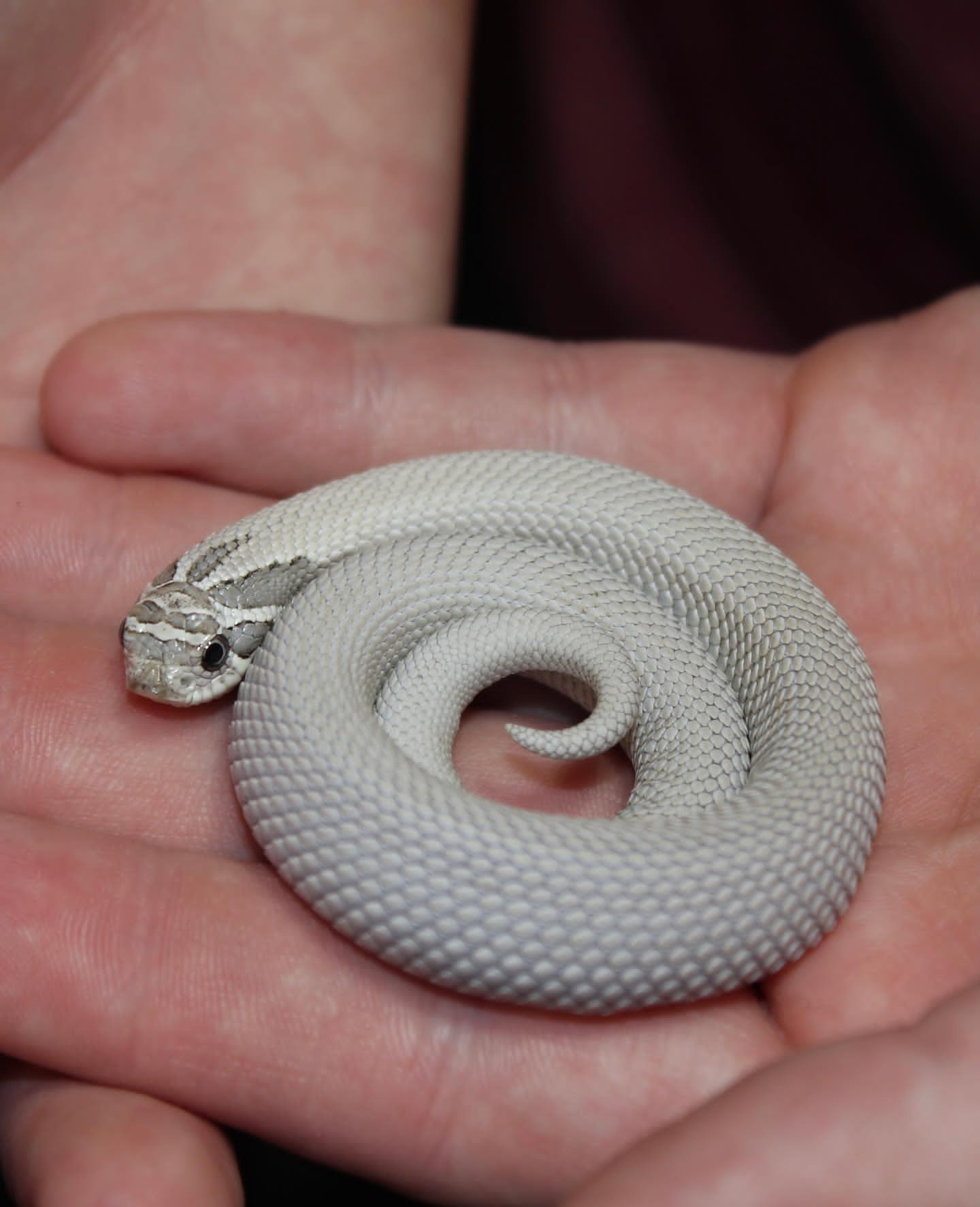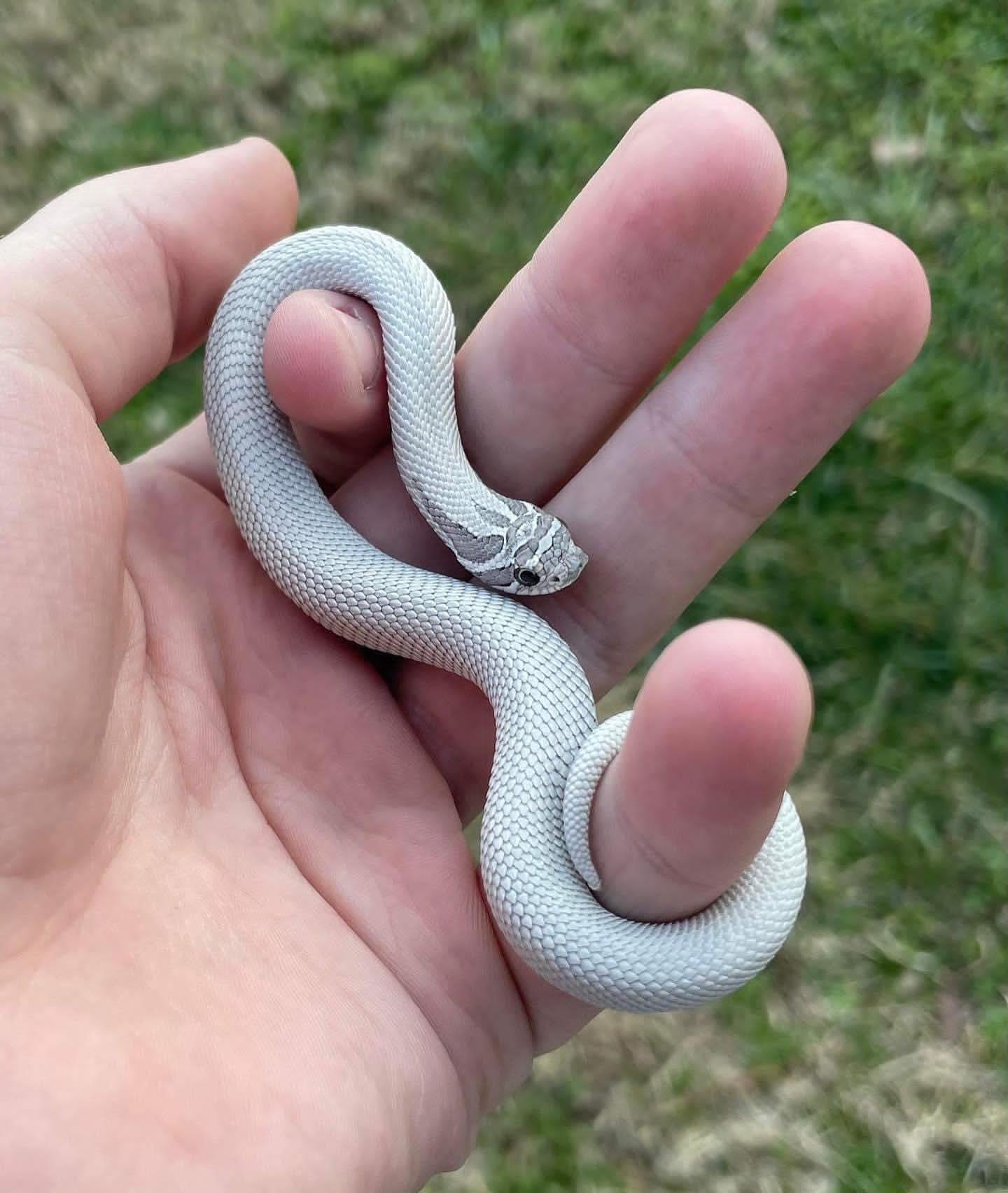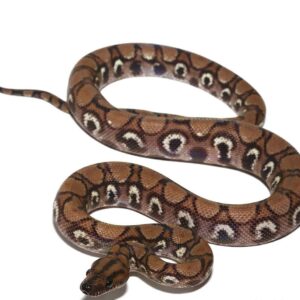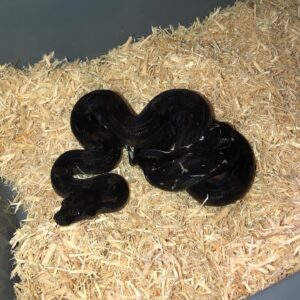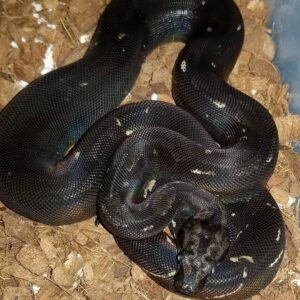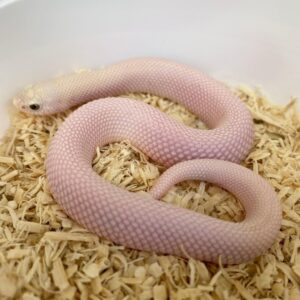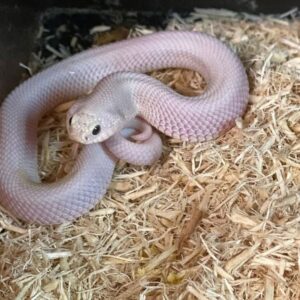Axanthic Super Anaconda Hognose For Sale
$1,050.00
We have beautiful Axanthic Super Anaconda Hognose Snakes for sale that are captive-bred.
Boabay provides Axanthic Super Anaconda Hognose with in a manner that is appropriate for the size mice. These Axanthic Super Anaconda Hognose are juveniles and babies, and range from 6 to 6″ long.
All Axanthic Super Anaconda Hognose we sell come with a Live-Arrival Warranty.
Diet
Hognose Diet In the wild, a hognose snake predominantly eats toads, frogs, mice, lizards, reptile eggs, and occasionally carrion. Captive-bred hognose will readily eat a rodent once a week. The prey item should be the same diameter as the snake’s head. Hatchling hognose should be fed defrosted pinky mice every five days.
Habitat
A large enclosure allows you to have additional hiding places that will enable the hognose to keep cover when feeling stressed. You can include a hide on the hot side and the cold front so that the snake can have different options.
Additionally, a large hide is easy to clean and sanitize. However, the hiding place should only accommodate a coiled hognose and not too big that it will not be usable.
You can also include extra items in the enclosure like logs and branches to make a cozy spot for the hognose as you will often see your snake climbing on them. If you decide to keep the snake in a biologically active cage, you can include a nutrient fertile soil and clay mix. We recommend keeping the cage furniture simple.
Description
The Axanthic Super Anaconda Hognose is a captivating and unique morph of the Western Hognose Snake, scientifically known as Heterodon nasicus. This particular morph has gained considerable attention among reptile enthusiasts due to its striking appearance and distinctive characteristics. The term “Axanthic” refers to a color mutation that results in a snake lacking yellow and red pigments, leading to a monochromatic palette of blacks, grays, and whites. When combined with the “Super Anaconda” pattern, which significantly reduces the number of dorsal spots, the result is a visually stunning and highly sought-after reptile.
One of the primary appeals of the Axanthic Super Anaconda Hognose is its unique coloration. Unlike the typical Western Hognose Snake, which often features earthy tones of brown and yellow, this morph showcases a more subdued yet elegant color scheme. The Axanthic mutation removes warm pigments, creating a cool-toned snake that stands out in any collection. The Super Anaconda pattern further enhances its visual allure by creating a sleek, almost patternless body, save for a few scattered spots, adding to its exotic charm.
Beyond its aesthetic appeal, the Axanthic Super Anaconda Hognose also boasts a range of behaviors and traits that make it a favorite among herpetologists and hobbyists alike. Known for their docile nature, Western Hognose Snakes, including this morph, are generally easy to handle and care for, making them suitable for both novice and experienced keepers. Their bluffing behavior, characterized by hissing and hooding when threatened, adds an element of intrigue without posing significant danger, as they are non-venomous and rarely bite.
Overall, the Axanthic Super Anaconda Hognose represents a fascinating blend of beauty and unique traits. Its striking appearance, combined with its manageable care requirements and engaging behaviors, makes it a highly desirable addition to any reptile enthusiast’s collection.
Morph Characteristics and Genetics
The Axanthic Super Anaconda Hognose is a unique morph resulting from the combination of two distinct genetic traits: the recessive axanthic gene and the co-dominant anaconda gene. Understanding these genetic components is essential for appreciating the specific characteristics of this striking reptile.
The axanthic gene plays a pivotal role in the coloration of the Axanthic Super Anaconda Hognose. As a recessive trait, the axanthic gene must be inherited from both parents for it to be visually expressed. When present, this gene eliminates yellow and red pigments from the snake’s scales, resulting in a monochromatic appearance. The absence of these pigments often leaves the hognose with shades of grey, black, and white, creating a ghostly and captivating look.
On the other hand, the anaconda gene is co-dominant, meaning that even a single copy of this gene can influence the snake’s phenotype. The anaconda gene is responsible for reducing the pattern on the hognose, leading to a more streamlined and less spotted appearance. When the anaconda gene is present in its super form, it significantly intensifies these effects, resulting in a near-complete absence of pattern. The combined effect of these two genes produces a snake with a smooth, almost patternless greyish hue, setting it apart from other hognose morphs.
Visually, the Axanthic Super Anaconda Hognose is characterized by its sleek, pattern-reduced body and its cool, muted color palette. This morph exhibits a striking contrast between the deep blacks and the lighter greys, sometimes with subtle hints of blue or silver. The head is often slightly darker than the body, adding to the overall dramatic effect. This unique combination of genetic traits results in a hognose that is not only visually stunning but also highly sought after by reptile enthusiasts and breeders alike.
Habitat and Natural History
The Western Hognose Snake (Heterodon nasicus), including its unique morphs such as the Axanthic Super Anaconda, is native to the central United States, spanning regions from Texas to Canada. These snakes predominantly inhabit areas with loose, sandy soils which facilitate their burrowing behavior. They are commonly found in prairies, grasslands, and semi-arid regions where they can easily dig and create underground shelters.
Hognose snakes thrive in environments with moderate temperatures, typically ranging from 75 to 85 degrees Fahrenheit. They are well-adapted to environments that experience temperature fluctuations between day and night, which is a characteristic of their natural habitats. Additionally, these snakes are known for their remarkable ability to endure periods of drought, highlighting their adaptability to various environmental conditions.
In the wild, Western Hognose Snakes exhibit fascinating behaviors and adaptations. They are primarily diurnal, meaning they are active during the day, and they use their upturned snouts to burrow in search of prey such as toads, frogs, and small rodents. Their unique defense mechanism involves playing dead, emitting a foul-smelling musk, and flattening their necks to mimic cobras, which can deter potential predators.
Understanding the natural habitat and behaviors of the Western Hognose Snake is crucial for providing proper care in captivity. Replicating their natural environment, including appropriate substrate for burrowing, temperature gradients, and humidity levels, can significantly contribute to their well-being. Observing their natural behaviors and adaptations offers valuable insights into creating an enriching and supportive captive environment.
Housing and Enclosure Requirements
The Axanthic Super Anaconda Hognose, like all reptiles, necessitates a meticulously maintained environment to thrive in captivity. Ensuring the proper housing conditions is crucial for the well-being of these unique snakes. When setting up an enclosure, the first consideration should be the tank size. For a single adult Axanthic Super Anaconda Hognose, a 20-gallon tank is typically sufficient; however, larger enclosures are always beneficial as they allow for more natural behaviors.
Substrate choice is another important aspect. Opt for a substrate that allows burrowing, as these hognose snakes are known for their fossorial tendencies. Aspen shavings, coconut husk, or a mix of soil and sand are ideal options. These substrates not only enable burrowing but also help maintain appropriate humidity levels within the enclosure.
Temperature gradients are essential for the Axanthic Super Anaconda Hognose. The enclosure should have a warm side with temperatures ranging from 85°F to 90°F, and a cooler side around 75°F to 80°F. This can be achieved using under-tank heaters or heat lamps. A thermostat is recommended to prevent overheating. Nighttime temperatures can drop slightly, but should not fall below 70°F.
Maintaining proper humidity is equally important. Aim for a relative humidity level of 30% to 50%. This can be managed by misting the enclosure lightly and ensuring adequate ventilation. Overly high humidity can lead to respiratory issues, so it is crucial to monitor this parameter regularly.
In terms of enclosure accessories, providing hides is vital. At a minimum, there should be one hide on the warm side and one on the cool side. This allows the snake to regulate its body temperature while feeling secure. Additionally, a shallow water dish should be present at all times. The water should be changed regularly to prevent bacterial growth and ensure the snake has access to fresh water.
By adhering to these housing and enclosure guidelines, you can create a safe and comfortable habitat for your Axanthic Super Anaconda Hognose, promoting its health and longevity in captivity.
Diet and Feeding Habits
The Axanthic Super Anaconda Hognose, a captivating breed known for its unique coloration and pattern, has specific dietary needs that are crucial for its health and well-being. Primarily, this snake’s diet consists of rodents, which provide the necessary nutrients for growth and maintenance. Mice are the most common choice, though some keepers may offer small rats as the hognose matures. It is essential to feed appropriately sized prey; typically, the prey should be no larger than the widest part of the snake’s body to prevent regurgitation or digestive issues.
Feeding frequency depends on the snake’s age and size. Juvenile Axanthic Super Anaconda Hognoses require more frequent meals, usually once every 5-7 days, to support their rapid growth. Adult snakes, on the other hand, can be fed every 10-14 days. Observing the snake’s body condition is crucial; a visibly emaciated snake may need more frequent feedings, while an overweight snake would benefit from a more controlled feeding schedule.
In terms of feeding behavior, the Axanthic Super Anaconda Hognose is known for its enthusiastic feeding response. They typically exhibit a strong feeding drive, often lunging at prey items with vigor. However, some individuals may exhibit more finicky behaviors, such as refusing food during shedding cycles or periods of stress. In such cases, patience and persistence are key, as well as ensuring optimal environmental conditions.
Dietary supplements are generally not necessary if the hognose is fed a diet of whole rodents, as these provide a balanced nutrient profile. However, calcium or vitamin D3 supplements may be beneficial in certain cases, particularly if there are concerns about metabolic bone disease. Always consult with a veterinarian with experience in reptile care for specific dietary supplement recommendations.
Potential feeding challenges include food refusal and regurgitation. If a hognose refuses food for an extended period, it is essential to review husbandry practices, including temperature, humidity, and enclosure setup. Regurgitation can occur if the snake is handled too soon after feeding or if the prey item is too large. Providing a stress-free environment and adhering to proper feeding techniques can mitigate these issues.
Health and Common Issues
Maintaining the health of an Axanthic Super Anaconda Hognose requires diligent care and attention to detail. One of the most common health issues faced by these reptiles is respiratory infections. Respiratory infections can be triggered by inadequate humidity, poor ventilation, or suboptimal temperatures within their enclosure. Signs of a respiratory infection include wheezing, nasal discharge, mouth gaping, and lethargy. To prevent these infections, it is crucial to monitor and maintain proper humidity levels, ensure adequate ventilation, and provide a stable temperature gradient within the enclosure. If symptoms of respiratory infection are observed, seeking veterinary care promptly is essential to prevent the condition from worsening.
Another prevalent health concern is the presence of parasites. Parasites can be internal, such as worms, or external, like mites. Symptoms of a parasitic infection include irregular shedding, weight loss, decreased appetite, and visible mites on the skin. Regular enclosure cleaning, along with routine health checks, can help in early detection and prevention of parasitic infestations. It is advisable to consult a reptile veterinarian for appropriate treatment if a parasitic infection is suspected.
Shedding problems, also known as dysecdysis, are another common issue that Axanthic Super Anaconda Hognose owners may encounter. Proper shedding is vital for the snake’s health, as incomplete shedding can lead to retained eye caps and other complications. Maintaining adequate humidity levels within the enclosure and providing rough surfaces for the snake to rub against can facilitate normal shedding. If shedding issues persist, it is important to seek veterinary advice to address any underlying health problems.
Preventive measures play a significant role in maintaining the overall health of an Axanthic Super Anaconda Hognose. Regular health check-ups, maintaining optimal environmental conditions, and providing a balanced diet are fundamental aspects of preventive care. Familiarity with common health issues and their symptoms enables owners to act swiftly and seek veterinary care when necessary, ensuring the well-being of their Axanthic Super Anaconda Hognose.
Breeding Axanthic Super Anaconda Hognose
Breeding Axanthic Super Anaconda Hognose snakes requires careful planning and an understanding of their unique needs. Selecting the right breeding pairs is the first and most crucial step. Ideally, both parents should possess the Axanthic and Super Anaconda traits to ensure the offspring inherit these desirable characteristics. It is essential to ensure the snakes are healthy, of appropriate age, and free from any genetic disorders.
The breeding cycle of Axanthic Super Anaconda Hognoses typically follows seasonal changes, with many breeders initiating the process in the cooler months. To stimulate breeding behavior, it’s common to reduce the temperature of their habitat slightly for a few weeks before gradually increasing it again. This mimics natural environmental cues and encourages mating.
Once the female has mated, she will undergo a gestation period of around 30 to 45 days. During this time, it’s crucial to provide optimal care, including a nutrient-rich diet and a stress-free environment. After gestation, the female will lay her eggs, usually in a secluded and humid area of the enclosure. Providing a nesting box filled with moist substrate can help create the ideal conditions for egg laying.
Incubation of the eggs is a critical phase. Maintaining a consistent temperature between 78-82°F (25-28°C) and high humidity levels is vital for the development of the embryos. The eggs will typically hatch after an incubation period of 50-70 days. Monitoring the conditions regularly and adjusting as necessary will help ensure successful hatching.
Once the hatchlings emerge, they require special care. Initially, they may not feed for the first few days as they absorb the remaining yolk. Providing small, appropriately sized prey items and maintaining a stable environment with proper temperature and humidity will support their growth and health. Close observation and timely intervention if any issues arise are essential to raising healthy Axanthic Super Anaconda Hognose hatchlings.
Ethical Considerations and Legal Aspects
When it comes to keeping and breeding Axanthic Super Anaconda Hognoses, understanding the ethical considerations and legal aspects is imperative. Responsible breeding practices must be a priority to ensure the well-being of these unique snakes. One of the foremost ethical considerations is maintaining genetic diversity. Breeders should avoid inbreeding, which can lead to a host of health issues in the offspring. It is essential to select breeding pairs that are not closely related to preserve the genetic health and vitality of the species.
Another critical aspect is the ethical treatment of the snakes. This includes providing an appropriate habitat, sufficient food, and proper veterinary care. Potential owners and breeders must be committed to the long-term care of these reptiles, as neglect can lead to severe health problems and even death. Ensuring that the snakes are kept in environments that mimic their natural habitat as closely as possible is also a key ethical consideration.
On the legal front, there are various regulations and restrictions that one must be aware of when owning or breeding Axanthic Super Anaconda Hognoses. These laws can vary significantly depending on the region. For instance, some areas may have specific requirements for permits or licenses to keep and breed these snakes. Additionally, there may be restrictions on the sale and transportation of these reptiles across state or international borders. It is crucial to research and comply with all relevant laws to avoid legal complications.
Moreover, understanding the legal frameworks surrounding the trade of exotic animals can help prevent illegal activities such as smuggling or poaching. Adhering to legal standards not only ensures the safety and well-being of the Axanthic Super Anaconda Hognose but also supports broader conservation efforts. In conclusion, ethical breeding practices and strict adherence to legal regulations are fundamental to the responsible ownership and breeding of Axanthic Super Anaconda Hognoses.




